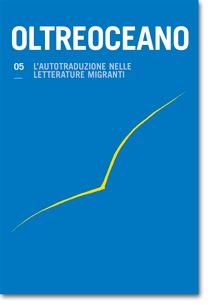Transplanted Subjects: Self-Translation Processes in Translingual Narratives
Keywords:
self-Translation, culture, religion, translingual narrativesAbstract
Translingual texts offer a comparative perspective, through which a dialogic process is established between the culture of origin and the host culture. They do so by addressing various frames of reference (religion, food, landscape, traditions, etc.) and by highlighting common and differing aspects in the two cultures. In this way, readers are not only made familiar with cultures often remote to them, but they are also offered a view from the outside of their own culture and society, so that they can look at it from a different – and critical – angle.
Soggetti trapiantati: processi di autotraduzione nelle narrazioni translinguistiche
I testi translinguistici offrono una prospettiva comparativa, attraverso la quale si instaura un processo dialogico tra la cultura di origine e la cultura ospitante. Ciò avviene affrontando diversi parametri di riferimento (religione, cibo, paesaggio, tradizioni, ecc.) ed evidenziando aspetti comuni e differenti nelle due culture. In questo modo, i lettori non solo entrano in familiarità con culture spesso lontane, ma viene loro offerta una visione dall’esterno della propria cultura e società, in modo che possano osservarla da un diverso – e critico – punto di vista.
Downloads
References
Ali Farah, U. C. (2007): Madre Piccola. Roma: Frassinelli.
Attar, S. (2005): Translating The Exiled Self: Reflections on Translation and Censorship. Intercultural Communication Studies, XIV, 4, pp. 131-147.
Bakhtin, M. (1981): The Dialogic Imagination. Trans. Vadim Liapunov. Austin: University of Texas Press.
Bhabha, H. (1992): The Location of Culture. New York: Routledge.
Bhabha, H. (1984): Of Mimicry and Man: The Ambivalence of Colonial Discourse, October, 28, pp. 125-133.
Besemeres, M. (2002): Translating One’s Self: Language and Selfhood in Cross-Cultural Autobiography. Oxford: Peter Lang.
Bouchane, M. (1990): Chiamatemi Alì. Milano: Leonardo.
Buruma, I. (2003): The Road to Babel. In S. G. Kellman (Ed.), Switching Languages: Translingual Writers Reflect on Their Craft (pp. 9-24). Lincoln: University of Nebraska Press.
Contarini, S. (2010): Narrazioni, migrazioni e genere. In L. Quaquarelli (Ed.), Certi confini. Sulla letteratura italiana dell’immigrazione (pp.119-159). Milano: Morellini.
Comberiati, D. (2007.): La quarta sponda. Milano: Pigreco.
De Caldas Brito, C. (2009): Estasi e saudade. Interview with Claudia Bonadonna. Retrieved from http:// www.railibro.rai.it/interviste.asp?id=28
De Courtivron, I. (2003): Lives in Translation: Bilingual Writers on Identity and Creativity. NewYork: Palgrave / Macmillan Press.
Hokenson, J. W.& Munson, M. (2007): The Bilingual Text. History and Theory of Literary Self-Translation. Manchester: St. Jerome Publishing.
Kachru, B. B. (2006): The Alchemy of English. In B. Ashcroft & al. (Eds.), The Post-Colonial Studies Reader (pp. 272-275). London and New York: Routledge.
Kellman, S. G. (2003): Switching Languages: Translingual Writers Reflect on Their Craft. Lincoln: University of Nebraska Press.
Lionnet, F. (1995): Autobiographical Voices: Race, Gender, Self Portraiture. Ithaca: Cornell University Press.
Lionnet, F. (1989): Postcolonial Representations: Women, Literature, Identity. Ithaca: Cornell University Press.
Makaping, G. (2001): Traiettorie di sguardi. E se gli altri foste voi? Catanzaro: Rubettini.
Meylaerts, R. (2006): Heterolingualism in / and Translation How legitimate are the Other and his/her Language? An Introduction. Target, 18, 1, pp. 1-15.
Mignolo, W. (2006): Local Histories / Global Designs. Princeton: Princeton University Press.
Nikolau, P. (2006): Notes on Translating the Self. In E. Loffredo & Perteghella, M. (Eds.), Translation and Creativity: Perspectives on Creative Writing and Translation Studies (pp.19-32). London: Continuum.
Nur Goni, R. (2005-2006): Il frutto candito dell’esilio. Unpublished Thesis, Master sull’Immigrazione. Venezia.
Ponzanesi, S. (2004): Paradoxes of Postcolonial Culture: Contemporary Women’s Writing of the Indian and Afro-Italian Diaspora. Albany: State University of New York Press.
Pratt, M. L. (1992): Imperial Eyes: Travel Writing and Transculturation. London: Routledge.
Sibhatu, R. A. (1998): Canto-poesia dall’Eritrea. Roma: Sinnos.
Spivak, G. C. (2000): The Politics of Translation. In L. Venuti (Ed.), The Translation Studies Reader (pp. 397-416). New York: Routledge.
Steiner, G. (1975): After Babel: Aspects of Language and Translation Oxford: Oxford University Press.
Tejaswini, N. (1994): Colonialism and the Politics of Translation. In A. Arteaga (Ed.), An Other Tongue: Nation and Ethnicity in the Linguistic Borderlands (pp. 35-52). Durham: Duke University Press.
Toury, G. (1995): Descriptive Translation Studies and Beyond. Amsterdam: John Benjamins.
Viarengo, M. A. (1990): Andiamo a spasso? Linea d’ombra, 54, pp. 74-78.
Viarengo, M. A. (2000), Scirscir ‘n demna: Extracts from an Autobiography. A. Hussein (Trans.). Wasafiri, 31, pp. 20-22.
Wakkas, Y. (1995): Io marokkino con due kappa. In R. Sangiorgio & A. Ramberti (Eds.), Le voci dell’arcobaleno. Santarcangelo di Romagna: Fara.
Wilson, R. (2009, July): The Writer’s Double: Translation, Writing and Autobiography. Romance Studies, 27, 3, pp. 186-198.
Downloads
Published
How to Cite
Issue
Section
License

This work is licensed under a Creative Commons Attribution-NonCommercial-ShareAlike 4.0 International License.
The authors undertake to comply with the following conditions, which are considered accepted at the time of submission of their contributions.
The sending of a text implies that it is unpublished and not submitted to be published elsewhere.
1. If accepted, the author shall confer on the publisher the right to publish and distribute it both in paper form and in the online electronic edition. The published articles will be downloadable and made available in open access.
2. Provided that it correctly indicates that the first publication took place in the journal Oltreoceano. Rivista sulle migrazioni the author has the right to: a) reproduce the article in separate extracts or collected in a volume; b) publish the article on their personal website or teaching site provided that these sites are of a non-commercial nature; c) deposit the article in online archives of a non-commercial nature, linked to the institution they belong to or as part of projects for the non-commercial dissemination and open access of scientific works.
The use of contributions by third parties, for commercial or otherwise unauthorized purposes, is not allowed. The publisher declines all responsibility for the unauthorized use of the material published in the journal.












